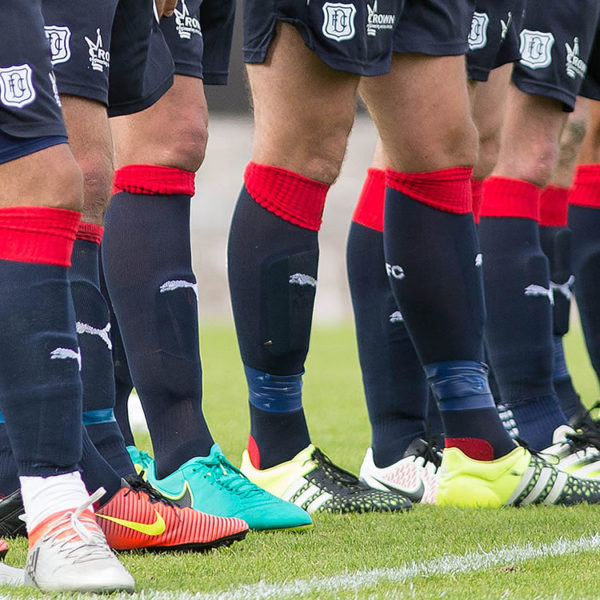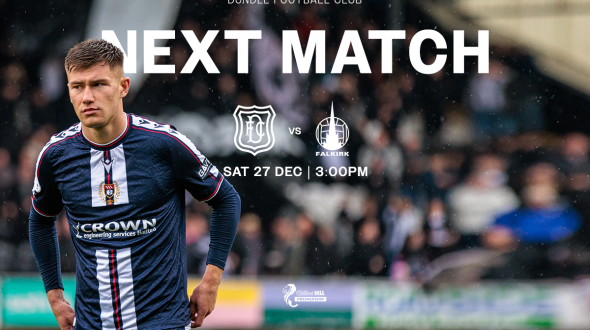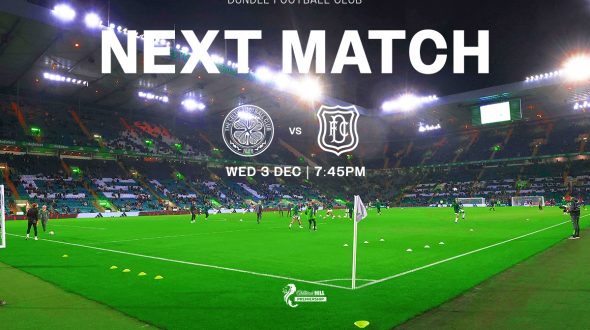The current pandemic is changing life as we knew and will no doubt be different when we return to some sort of normality but adapting to life and change is nothing new to city of Dundee.
Post-war Dundee was a vibrant city and Billy Steel & Co. were very much part of that vibrancy. By the mid 1950s however it was starting to change out of all recognition as modernisation began to transform the landscape, not only in the city centre but also in the north where new ‘avenues of hope’ housing schemes were being built while at the same time, the great Dundee side which won back-to-back League Cups began to break up, marking the end of an era both on and off the park.
Dundee was, and is, and beautiful city, built around the rock of an extinct volcano known locally as The Law. When approaching the city by train across the longest rail bridge in Europe, the magnificence of Dundee can be glimpsed and the skyline of Alfie Boyd’s Dundee had yet to be contaminated by the high rise flats or ‘multis’ built in the sixties. Dundonians returning home from the south often get goose bumps at the site of the city as it stretches along the River Tay’s estuary from Broughty Ferry in the east to Invergowrie in the west.
Dundonians are fiercely proud of their heritage and while some observers have described it as ‘dour, grey or dull’, this couldn’t be further from the truth for anyone who hails from, or has spent any time in the city. The view from The Law is spectacular; the promontory of Broughty Ferry, the green hills of Fife, the Sidlaws to the north, Balgay Hill to the west and the hinterland of Perthshire which can be spied across the Tay valley are amongst the views that give Dundee its flavour and the stories that exist within the visual feast are rich and warm.
There was also Lochee with its rich character – not yet defaced by the roadways and concrete blocks – and the famous Cox’s Stack tower to the north-west, a testament to the importance of jute to Dundee. Then there was the Hilltown and the city centre to the south and to the north-east were Dens Park and Tannadice, home of the city’s two football clubs, Dundee F.C. and Dundee United and the view of their grounds was vastly different to the one that exists today.
Dens and Tannadice are separated by a Bill Brown goal kick and sharing the same street, they are the two closest senior football grounds in the world. In 1954, Dens Park was an altogether different venue from the one today as there were no box-work all-seater stands. Dens was uncovered on three sides as the South Enclosure wasn’t built until 1960 and the terracing bowl went round from the east side in front of the T.C. Keay factory, round to Dens Road on the south, to the west terracing on the Provost Road.
On the north side was the main grandstand which exists today with its unique v-shape to give spectators in the wing stands a better view. Designed by renowned football architect Archibald Leitch, it opened in 1921 and is a reminder today of a bygone era of players of a different age with their ankle length boots and replaceable leather studs.
The story goes that he was taken up to Dens, given copious amounts of coffee and a cold shower and went out to score two goals.
Road transport in the 1950s was still on the whole poor. To travel to other Scottish cities could take the best part of a day as there were few by-passes and no motorways. For the keener Dundee football fan, travel to away games was mostly undertaken by train but with two football clubs in the city, fans of either persuasion would often watch Dundee one week and United the next. United were the poor relations in the early Fifties, languishing in the ‘B’ Division. As such, they often earned sympathetic support from Dundee fans on matchdays when the Dark Blues were playing away from home.
Within the city, tramcars were the main mode of transport and the city centre was a curious array of streets, particularly around the old Overgate. When the League Cup came to Dens for the first time in 1951, the old Wellgate still ran up from the end of the Murraygate to the bottom of the Hilltown and that would take you to Dens, provided you could negotiate the steep climb.
The corner of the now-vanished D.M. Brown on Commercial Street was a favourite meeting place for Dundonians and legend has it that Billy Steel was once found sitting on the pavement there by frantic Dundee F.C. staff, still drunk from the night before on the morning of a game. The story goes that he was taken up to Dens, given copious amounts of coffee and a cold shower and went out to score two goals.
The city of Dundee was built on jute and the city became known for its ‘Three Js’ – Jute, Jam and Journalism. By the beginning of the twentieth century there were 30,000 Dundonians working in Dundee’s jute mills out of a population of 150,000. Jute gave Dundee its unique character and the smell of jute was in the air in the same way the smell from the breweries hung around the air in Edinburgh. The whiff of jute won’t easily be forgotten by anyone who was brought up in the first half of the twentieth century.
Jute contributed to every aspect of life in Dundee, not least its dialect and it made the mill owners rich. Many built themselves mansions in either Broughty Ferry or in the west end near the Perth Road and over the years many of the jute barons invested their money in shares in Dundee Football Club and became directors on the board.
Jam and marmalade production at Keillors was another staple of Dundee life as was the publishing firm D.C. Thomson & Co. which produced such titles as The Courier, The Sunday Post, The Dandy and The Beano.
There was far less consumer spending in those days and in 1954 the average working wage was around £589 per annum. Luxuries were rare and even holidays for Dundonians were rarely taken further afield than Broughty Ferry.
Like any Scottish city, Dundee had its fair share of public houses, most of which closed at 10pm and stayed shut on Sundays. There were thirteen picture houses or cinemas in the city in the early Fifties but the most popular form of entertainment in the city was football. In the season Billy Steel signed for the Dark Blues, Dundee’s average crowd at Dens Park was 23,500 and the club’s record crowd was beaten three years in a row from 1951 to 1953.
It was amongst this background that George Anderson brought unprecedented success to Dundee with two League Cup wins, one Scottish Cup Final appearance and one Scottish League Championship runners-up spot in a three-year period. By the summer of 1954 however, Anderson was still dogged by the ill-health that caused him to miss the 1952 League Cup Final and he finally stepped down as manager, though retaining his seat on the board.
Many thought that assistant Reggie Smith was the logical successor but his replacement was veteran Rangers and Scotland centre-forward Willie Thornton, a somewhat surprising choice. Smith had been offered the post on a joint basis with Bobby Ancell back in 1949 but he turned it down, but now having gained coaching certificates both north and south of the border, he seemed the obvious successor to Anderson.
Smith was far from happy with Thornton’s appointment and in September he set an example that was to be followed by Jim McLean in similar circumstances seventeen years later when he took the short walk down Tannadice Street to become manager of Dundee United.
Anderson’s departure and Thornton’s appointment signalled that the good times were coming to an end. Already Jack Cowan, Gordon Frew and Ken Ziesing had left and Jimmy Toner was given a free transfer. A number of the squad such as Gerry Follon, Tommy Gallacher, Pud Hill and Bobby Flavell were in the twilight of their careers and it was apparent to Thornton that a major rebuilding task had to be undertaken.
Before Anderson left it had been discovered that Billy Steel had not been training as regularly at Partick’s Firhill as was thought and in April Steel was given an ultimatum that he must train full time at Dens. Steel refused as he still had his sports shop in Glasgow and George Anderson put his superstar up for sale.
No offers were received for the thirty-one-year-old and three months later, after refusing new terms from Thornton, he shocked Scottish football once again by announcing his departure to the U.S.A. He was to become manager of the Los Angeles Danes and with a job, car and house thrown in, he would earn around $600 a month; four times his Dens Park salary!
It wasn’t the last that Dundee heard of Billy Steel however as two years later Willie Thornton received a letter out of the blue from Steel. Things had not gone well for him in America as, after only six games, he was dropped by the L.A. Danes before a driving offence earned him adverse publicity that the club did not like. He moved to San Francisco where he did not play for eighteen months until he signed for Hollywood F.C. early in 1956.
Now the thirty-three-year-old wanted to return to Dundee, claiming he still had two years left in him and asked Willie Thornton for a trial. Thornton agreed to the request and was happy to welcome back a prodigal son but in true ‘Budgem’ style, nothing more was heard from him again.
To replace Reggie Smith, Willie Thornton brought in former Arsenal player Archie MacAuley as his right-hand man. MacAuley had played in the same Great Britain side as Billy Steel against the Rest of Europe in 1949 but his ideas of coaching and tactics were radically different to those that had been used under ‘Toffee Dod’. Instead of an open attacking style, MacAuley wanted Dundee to defend deep, retreating to the eighteen-yard line when the opposition had the ball and these tactics became unpopular with established internationalists such as Doug Cowie.
Thornton was also keen to model his Dundee side on Rangers’ defensive style of the time and although it served the Ibrox side well, the results at Dens did not come.
Thornton however was willing to give youth a chance and in the next few years he gave debuts to Pat Liney, Alex Hamilton, Bobby Cox, Ian Ure, Andy Penman, Alan Cousin, Alan Gilzean, Hugh Robertson and George McGeachie, who would all win the Scottish League Championship with Dundee.
His side was nicknamed the ‘Thornton Babes’ by some sections of the press and in April 1956 beat the ‘Busby Babes’ of Manchester United 5-1 – the game in which Bobby Charlton made his Manchester United debut – just after they had been crowned Champions of England.
As the youth came through, the old guard of the Anderson era were phased out and when Bob Shankly took over as manager in September 1959 only Doug Cowie and Bert Henderson remained from the League Cup winners. Henderson left Dundee in January 1961 when he was sold to St. Mirren and just six months later, Doug Cowie followed him out of Dens when Bob Shankly gave him a free transfer.
Cowie’s release severed the last connection of the George Anderson golden years and it appeared to many that Shankly had purposefully rid the club of the last of the Anderson old boys. In the Dundee Greats book, Cowie said: “Whether Bob saw me as the last of the Anderson men about the place and maybe felt I had too much influence I don’t know. It was a blow.” Thirty-four-year-old Cowie was even more disappointed when Shankly signed Gordon Smith, a player three years a senior a few weeks later and his departure denied Cowie a league winner’s medal when the Dark Blues became Champions of Scotland eight months later.
After ten years without any silverware Bob Shankly won the Scottish League Championship with a wonderful side and delivered the prize that George Anderson could not. Anderson however had built Dundee up after the war from a second division side to a Scottish football, trophy-winning force and started the legacy that Shankly was able to build upon. Without the vision and endeavour of George Anderson and his team, the Scottish League Championship might not have come to Dens. To that we should all doff our bowler hats to ‘Toffee Dod’ and hope that James McPake can replicate the success of his predecessor.
Article – Kenny Ross
















